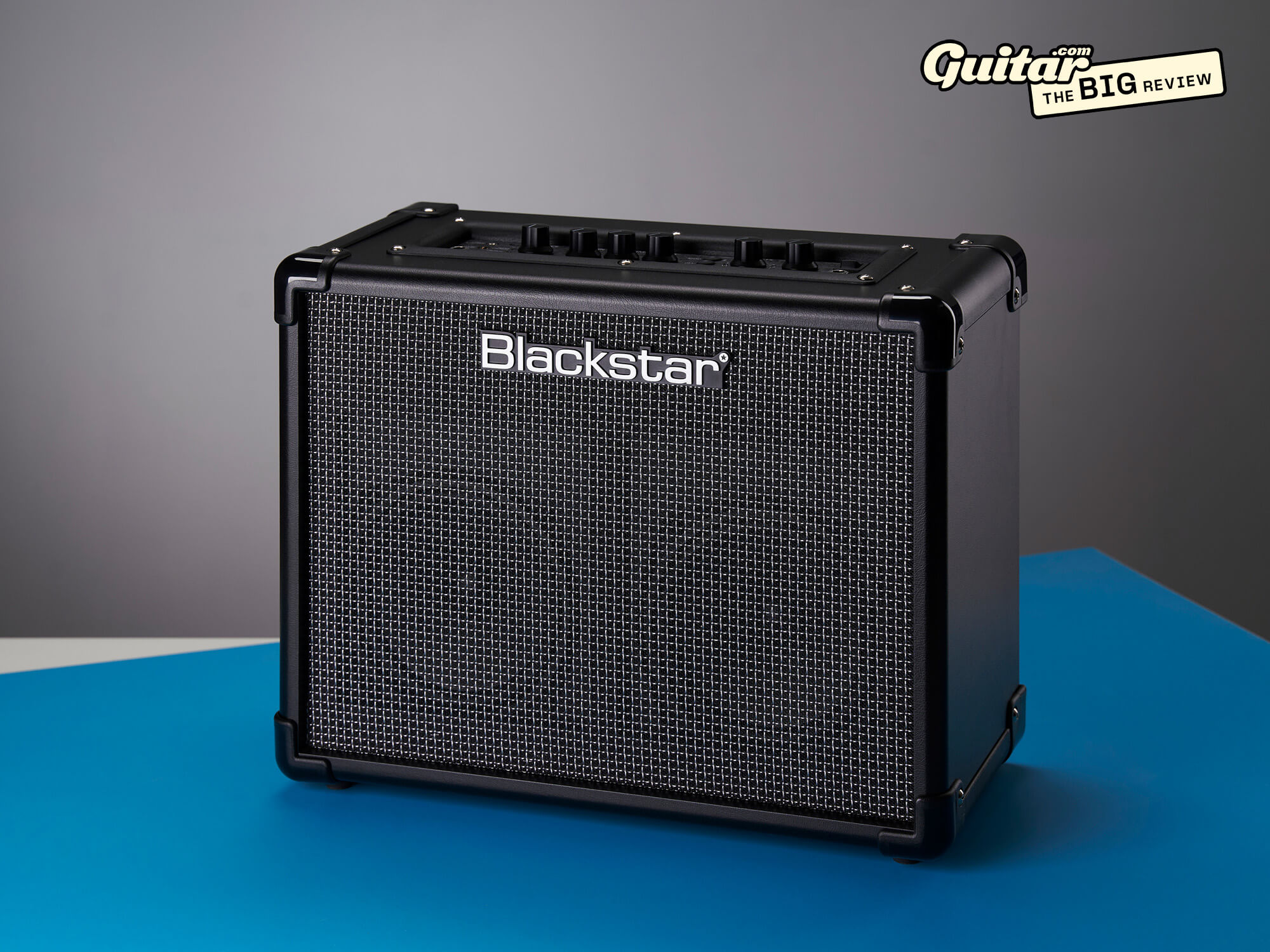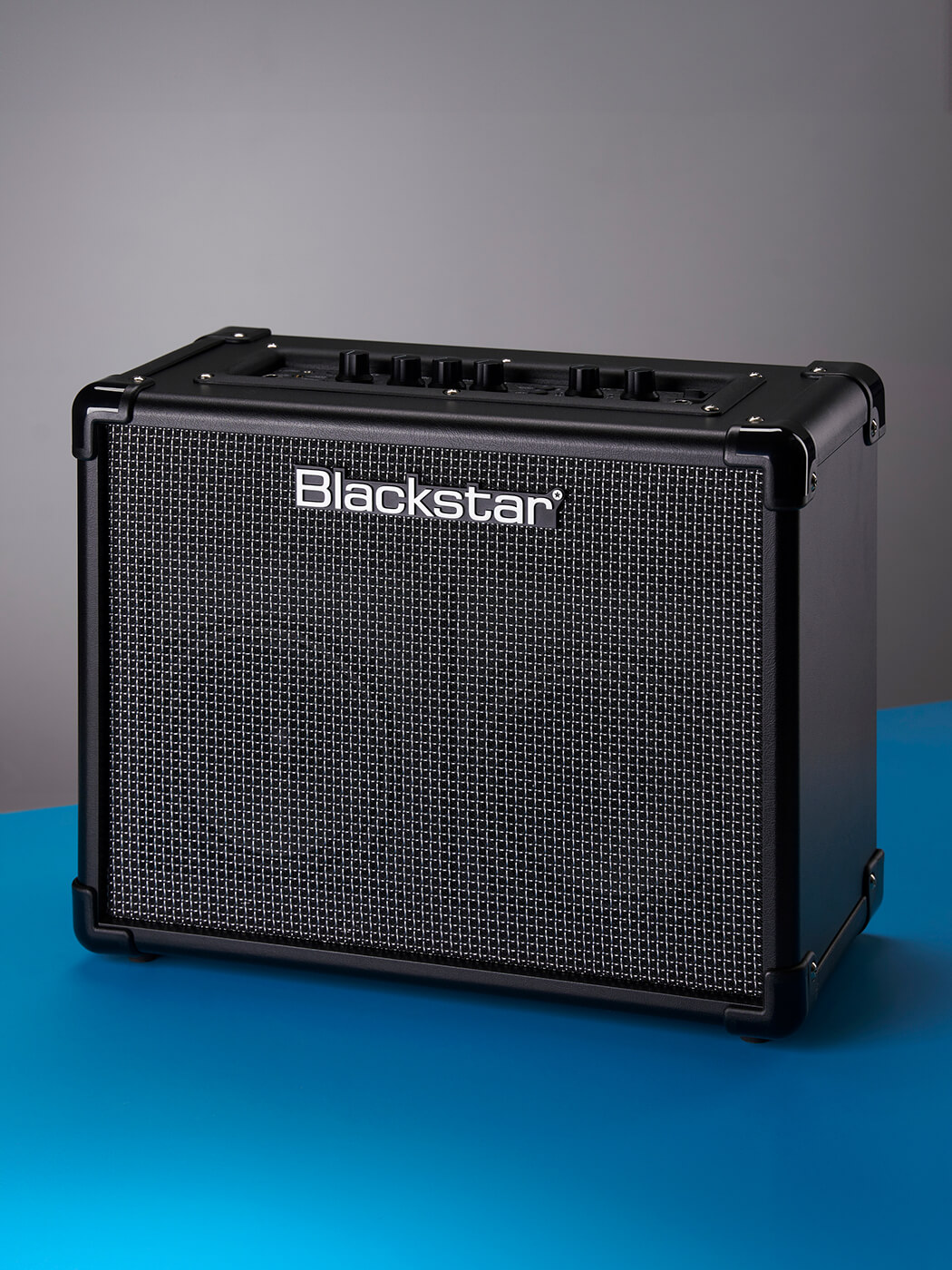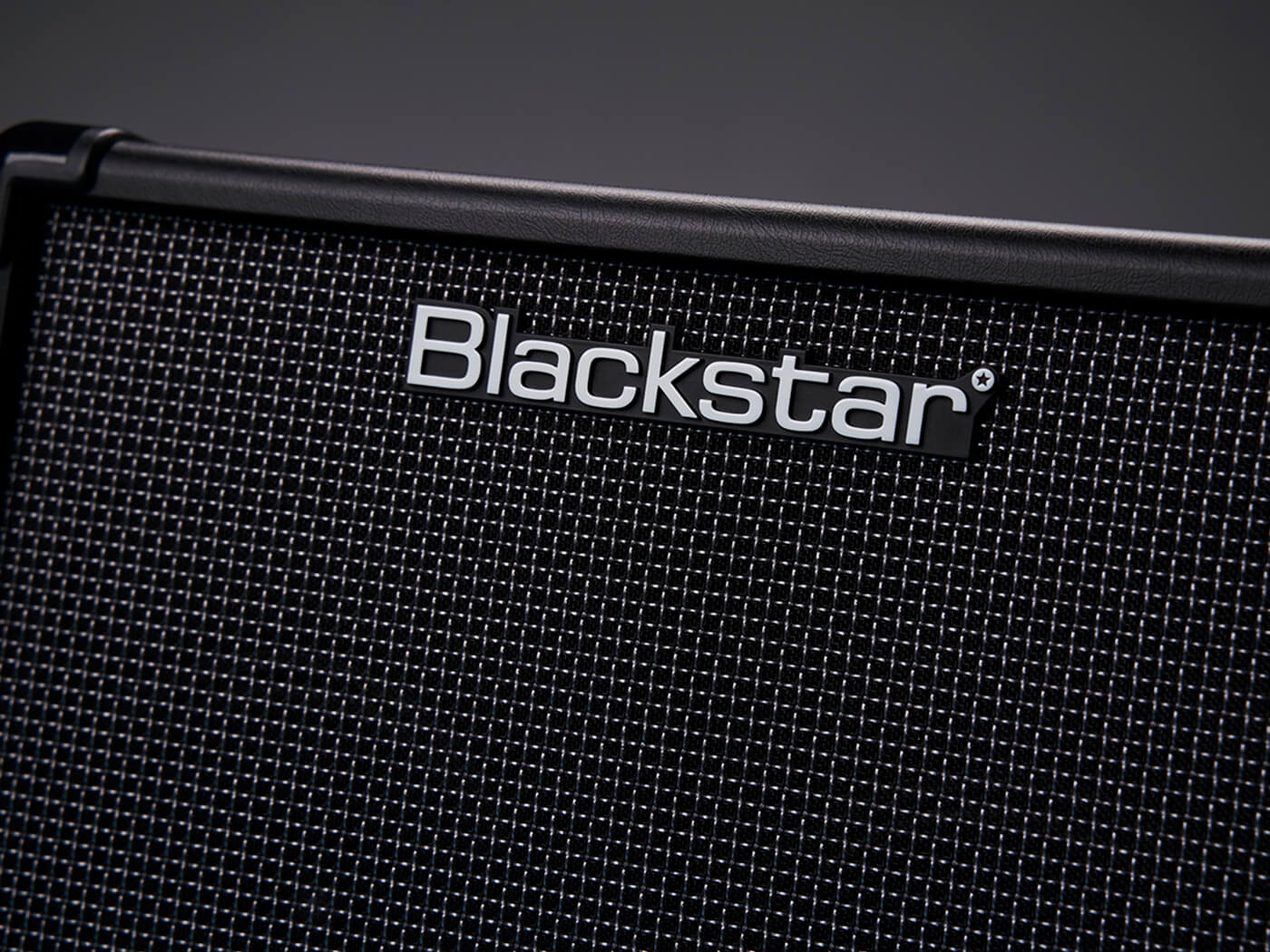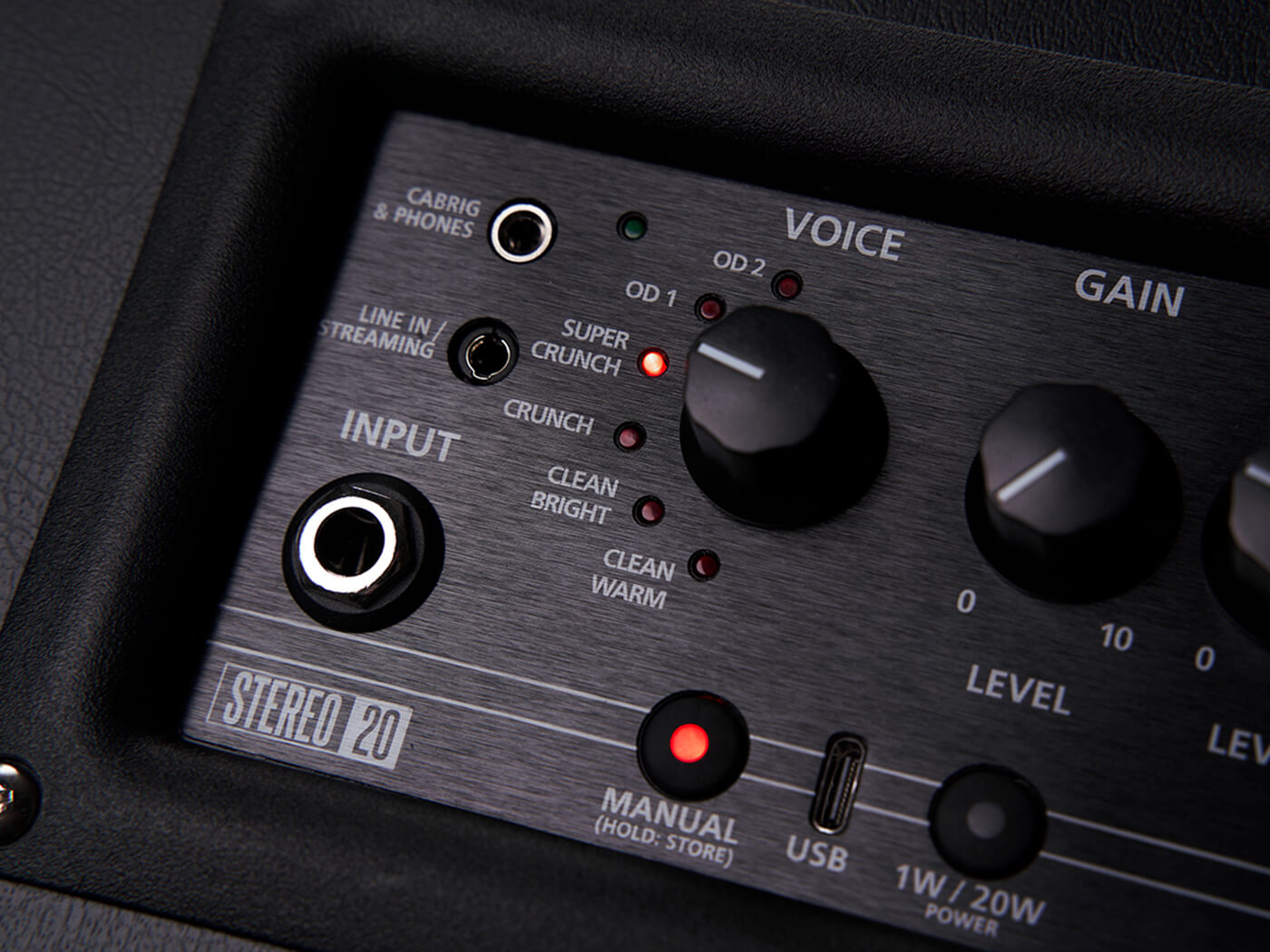Related Tags
Blackstar ID:Core V4 Review: Blackstar claims it’s created an amp for practice, recording, movies and gaming – but are they right?
Does the ID:Core V4 have more in store than before, or is it a bit of a bore? Let’s explore the latest version of the brand’s hugely popular modelling amp.

Blackstar ID:Core V4. Image: Adam Gasson
Review Overview
Our rating
7
Our verdict
$159.99/£179, blackstaramps.com
Blackstar has long been a top player in the small digital amp game, in particular thanks to its well-regarded ID:Core range. But stereo effects and great digital connectivity aren’t as rare as they were when those amps first launched all the way back in 2014. Has the ID:Core range’s latest upgrade to V4 brought it up to date with 2024, or has it fallen behind the pack?
The specific model I’m taking a look at is the ID:Core V4 Stereo 20, which has two 5” speakers, each running at 10 watts. Also available are the Stereo 10 and the Stereo 40, with pairs of 3.5” and 6.5” speakers running at 5 and 20 watts respectively. Aside from size and volume, the only difference between the three is that the 10 doesn’t have a footswitch jack for cycling presets.

What’s the difference between the ID:Core V3 and ID:Core V4 amps?
On the literal face of it, not much has changed since V3 – the control panel layout has remained almost identical. For app control and audio interface usage we do now have a USB-C port rather than the outdated USB mini-B, and there’s the addition of a low-power button, which drops the output down to 1W for easier use at quiet practice levels.
But the rest of the functionality is very much in line with the V3’s: direct sounds are again provided by CabRig Lite, deep editing by the Architect software and simultaneous playback and recording/streaming on a smartphone by a TRRS port. The effects and amp models on offer are all broadly the same, too, however Blackstar does note that there’s been some re-voicing here and there.
But the changes are for the most part incremental and internal – nothing stands out as something the version increase can hang its hat on, unless you want to count the fact the control panel now has a brushed metal texture rather than just a matte black one. Until we get going, we have to take Blackstar’s word for it that a few tweaks have made the V4 more ‘better’ than the V3. So let’s ditch the spec sheet and actually plug in, shall we?

What does the ID:Core V4 sound like?
The first thing that strikes me is the volume. While this is an amp clearly designed for home use first, the full 20W mode is absolutely capable of getting neighbour-botheringly loud. I wouldn’t trust it against a drummer, but that’s not really the goal here. Still, Blackstar notes that a few internal tweaks have made the V4 models even louder than their V3 equivalents, and I’m inclined to believe that claim.
On the other end of the volume scale, dropping down to 1W doesn’t really do anything to the sound that turning the master volume down doesn’t. Not that surprising – this is ultimately a solid-state amp, we’re not overdriving a tube power section here. What it does give you is finer control over the quieter end of things. As added features go, it’s not exactly groundbreaking, but it’s a welcome one when balancing the amp’s volume against the TV when I’m mindlessly noodling away.
As for the actual sounds? I start with the cleans, and I’m pleasantly surprised. There’s a rounded, slightly compressed feel to them, evoking the clean channel of a tube amp rather than an ultra-linear ‘clean’ solid-state amp. Into the overdrive sounds, and things remain perfectly fine – nothing particularly inspiring, but nothing fizzy and over-saturated either. Adding in some effects is a breeze thanks to the intuitive one-knob three-button control layout. As with the general amp sounds, the modulation effects are a bit stale but perfectly serviceable. Except for the envelope filter, of course, which is an envelope filter �– and should therefore be left alone for everyone’s sake.
Despite lots of hoo-ha about ‘Super-Wide’ stereo, a true ping-pong delay is sadly not to be found. Instead, the stereo reverbs and delays just add a nice bit of width to things in a way that a mono amp can’t. They’re not bad sounds by any stretch, but compared to the ultra-complex panning trickery some pedals can achieve, it’s nothing that wild. But hey, at the end of the day, this is not meant to be a replacement for a Strymon: the main benefit of the stereo implementation here is being able to play along to backing tracks without everything being mixed down to mono. Some width from the effects is an added bonus.

Switching to the higher-gain models, the amount of low-end Blackstar has managed to draw out of just two small five-inch speakers is impressive. This is good on one hand, as it makes the wee little amp feel like a bigger, louder and pricier thing. On the other hand, the low-end quickly becomes too much with the distorted sounds – especially if you’re trying to play quietly or practice along to music.
While the obvious fix would be to knock down the bass control, there’s actually no EQ beyond Blackstar’s unique ISF knob on the physical control panel. While that’s always nice to have, letting you sweep between both sides of the Atlantic’s agreed-upon EQ voicings, it doesn’t help when you need to make drastic adjustments – such as shelving off enough low-end to make the distorted sounds usable.
To do that, you’ll need to download the Architect deep-editing software. This unfortunately requires you to register your device and give Blackstar your email – par for the course, maybe, but more than a little frustrating if you just want to get on with playing guitar. The good news is that once the email handover is complete, the software itself is fast and easy to use, and works on your laptop via USB-C (yay, wahoo) rather than on a smartphone via Bluetooth (boo, hiss). The three-band EQ control works as expected, and here I can also make and load presets from my own library or that of other ID:Core users.
Once that low-end is sorted out, the drive sounds are all pretty good – hard-rock thunk, scooped metal chugs and saturated leads are all quickly achievable. As with the low-gain sounds, nothing really stands out as particularly inspiring, but everything is perfectly usable. That ISF sweep does provide a lot of tonal range, so even if individual sounds aren’t that exciting you’ll have enough variety not to get bored.
It’s worth noting that this is a closed-back combo, so when using the speakers, directionality is quite a large factor in a good sound. Not an issue if it’s on a coffee table or desk in front of you, aimed vaguely at your head – but tuck it away in a corner of a living room, and you may find it a bit muffled.

Going direct with the ID:Core V4
The Architect app also offers control of CabRig Lite, the stripped-back version of Blackstar’s cabinet-sim software that drives the ID:Core V4’s direct sounds. You can choose from various virtual cabinets and tweak virtual mic positions – it’s a stark reminder of how many technical leaps and bounds have been made in direct guitar tones over the years. The headphone sounds on my first practice amp – a thing of comparable price to the ID:Core V4 at the time – were a sonic experience akin to destroying a wasp’s nest with a hedge trimmer.
But we’ve come a long way since then. The ID:Core V4 offers a spacious direct tone that actually sounds comparable to what comes out of the front of the amp. It’s nothing revolutionary, especially not compared to the full version of the CabRig suite, but it’s good to see a much better-quality direct standard being included on such a budget piece of gear.
Importantly, that headphone port isn’t the only outlet for CabRig Lite. There’s also the ability to use the whole amp as an interface via that USB-C port, or connect to a smartphone’s mic line-in with that TRRS jack. Again, nothing that you couldn’t do on V3, but it’s nice to not have to find a USB mini-B cable in that drawer of outdated connectors.
So CabRig Lite broadly does a good job – but I do want to note just how muddy the reverbs and delays become through headphones. The ‘verbs in particular just swamp the low-end when going direct, and occasionally the stereo width provided by the delays feels like it’s getting in the way rather than providing space.

Who is the Blackstar ID:Core V4 for?
Blackstar’s marketing for the ID:Core V4 puts it forward as a companion for the streamers and content creators of the world as much as it is a pure practice amp. Indeed, when you take it out of the box one of the things stickered onto the front panel is “Live Stream Ready.” But, really, your mileage may vary – connectivity-wise, it’s more than up to the task, but when it comes to inspiring actual music expression, there’s something missing. The tones and effects are fine, but perhaps falter in the face of the more professional options available from other dedicated direct solutions. Admittedly, some of those options are a good deal more expensive – if you’re on a budget, the ID:Core will get you there. But you may soon find yourself itching to upgrade to something more flexible.
Speaking of flexibility, Blackstar also claims that an ID:Core amp is “perfect for gaming audio or watching movies”, making it the only speaker you’ll need. But I wouldn’t really agree with this – stereo is pretty nice to have within the context of playing along to tracks, but the actual width of the soundstage is obviously limited by the proportions of the thing. As mentioned it’s also very directional, and has that slightly resonant frequency response that’s fine for a guitar sound – but just doesn’t make for a great listening experience.
What the ID:Core V4 can do is be a really good practice amp, for beginners and seasoned players alike. The easily accessible breadth of sounds makes playing along to anything from blues to metal to djent to jazz a quick and easy process. The small form factor and good direct connectivity make it as ideal for coffee-table noodling as it is for hammering out scale exercises at a desk. If that’s all you need, the ID:Core V4 comes with a hearty recommendation.
It’s also worth mentioning that the 10 and the 20 models are both under £200, making them great alternatives to, say, the Positive Grid Spark, or Yamaha’s THR amps. If you’re not that fussed about stereo and foresee yourself needing to keep up with a drummer at some point, it’s not much more cash to get a 50-watt Boss Katana – this will get you similar sonic versatility and direct connectivity, with the added bonus of actually being giggable.
You may also be intrigued by the V4 specifically if you’re a current owner of an ID:Core V3. If you’re considering the upgrade, my advice would be: don’t. Not enough has changed to warrant chucking out an old amp just to get something that’s ‘one’ better. Just hang on to that mini-B cable, and you’ll be OK.
